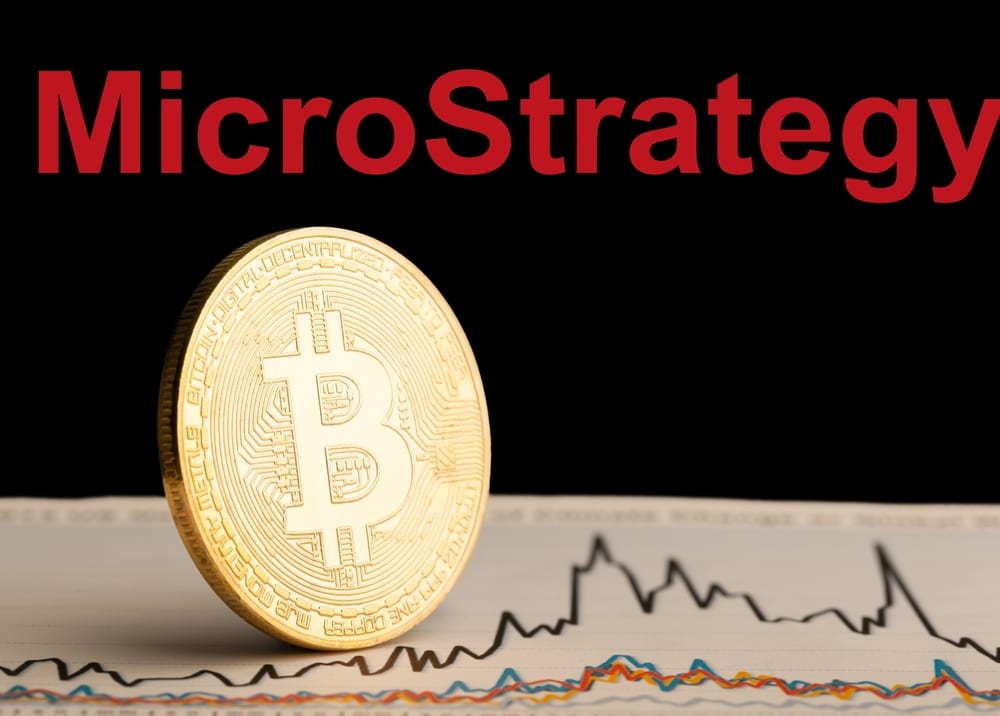
Microstrategy’s Chair Michael Saylor Optimistic Bitcoin ETFs Rival S&P 500, Likely to Outpace Leading ETFs
MicroStrategy chair Michael Saylor forecasts sustained growth for Bitcoin exchange-traded funds (ETFs) rivals S&P 500 and is likely to outpace leading ETFs. The former chief of the business intelligence firm hailed the success realized by BlackRock and Fidelity Investments, particularly in surpassing forecasts in the new Bitcoin ETFs to unimagined levels.
Bitcoin Rivals S&P 500 Index ETFs
In a March 6 interview at the Madeira Bitcoin conference, Saylor revealed that Bitcoin ETFs would rival gold only to race and top the leaderboard. The MicroStrategy’s chair admitted that Bitcoin ETFs are nipping closer to the heels of the S&P 500 Index ETFs.
Saylor disclosed that gold ETFs, though currently the leading commodity ETFs in the US, will soon play second to their Bitcoin counterparts.
The optimism by the long-term Bitcoin advocate arises from the accelerated progress of Bitcoin ETFs since its unveiling two months ago. By Tuesday last week, BitMEX Research reported that Bitcoin ETFs collectively realized $8.5 billion in net inflows even after offsetting the outflows suffered by Grayscale Bitcoin Trust (GBTC) since its conversion.
Saylor reflects on Fidelity Investments (FBTC) and BlackRock (IBIT) emerging as the largest funds that realized the largest inflows within 30 days of unveiling. The optimistic prediction by Saylor arises when funds are consistently within the top-20 ranked ETFs witnessing daily active trading.
The BitMEX Research revealed in their Tuesday, March 12 update that the US spot Bitcoin ETFs realized record net inflows that surpassed $1 billion. The data illustrates that BlackRock’s IBIT ETF had surpassed 200,000 Bitcoin in its assets under management (AUM) earlier in the week.
BlackRock IBIT Realizes 849M Inflow
The BitMEX Research reported that BlackRock IBIT saw an inflow of $849 million, translating to a record 14,706 Bitcoin inflow. Also, the collective net Bitcoin ETF inflows crossed $4.1 billion since the January 11 approval.
BitMEX Research revealed in the Tuesday, March 12 update that the spot Bitcoin ETFs now account for 90% of daily trading volume share for all ETFs that offer Bitcoin exposure. The report indicated that the Bitcoin futures ETFs only account for 10% of the market share.
Bloomberg leads ETF analyst Eric Blachunas indicated on March 5 that was the spot Bitcoin ETFs to sustain the pace and add $10 billion in the month; they would surpass gold ETFs by summer.
Saylor illustrated that the ETFs are a universal application programming interface (API) that allows investors to quickly execute trades involving various funds upon which they can access Bitcoin. API involves the standardized conduit to the data to streamline interactions among computer systems. It constitutes the global protocol applied in trading volatility and issuing credit.
Spot Bitcoin ETFs Opened Entire Financial World
Before the spot Bitcoin ETFs, taking out loans against Bitcoin involved a slow process with higher interest rates. Presently, one can post the shares of an ETF as the down payment on the mortgage via a trusted broker-dealer to execute the process.
Saylor hails the ETFs as opening up the entire financial world to opportunity, awareness, and functionality, particularly for mainstream investors. The Bitcoin advocate ruled out underestimating the profound essence of ETFs for the whole network.
Saylor’s MicroStrategy is still the largest public-listed Bitcoin holder, with over 193,000 token units. The firm targets acquiring additional Bitcoins from funds raised in the $700M convertible note sale.
Saylor’s optimism about spot ETFs proves relevant, given that they are objectively successful in various measurable metrics. Block’s vice president of Research, George Calle, observes that witnessing over $1 billion in net inflows in a month since the spot Bitcoin ETF approval is impressive.
GSR Research executive Brian Rudick indicated that the spot Bitcoin ETFs have surpassed all optimistic expectations. The realization of $10 billion inflows in two months hit levels initially projected to take 12 months. The market analysts support increased inflows, alleging greater issuer sale efforts, normalized GBTC outflows, and additions to the offerings by wealth manager products.




